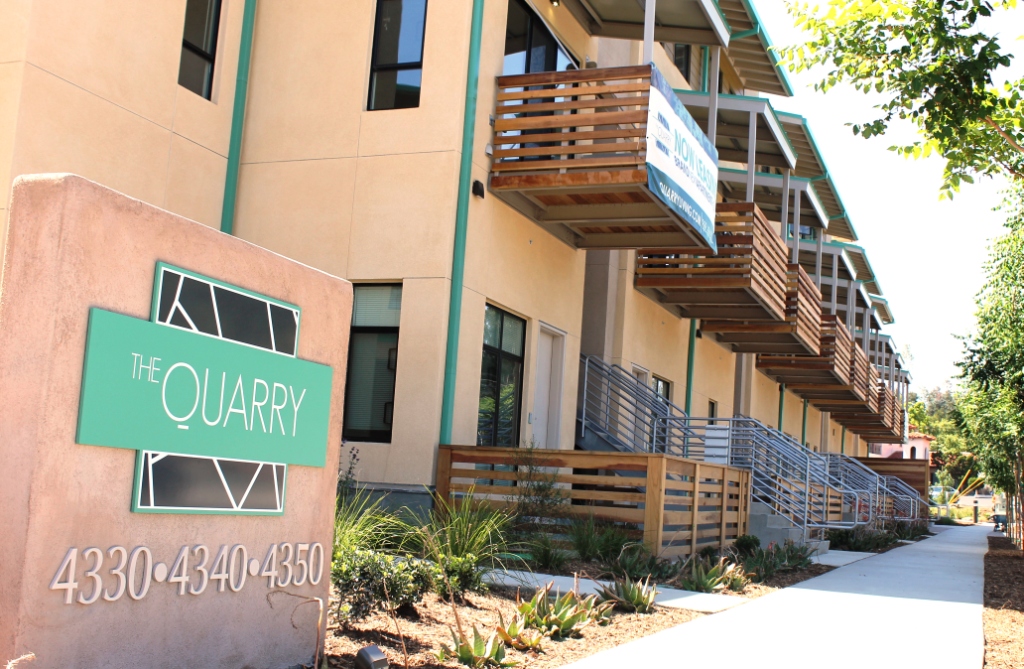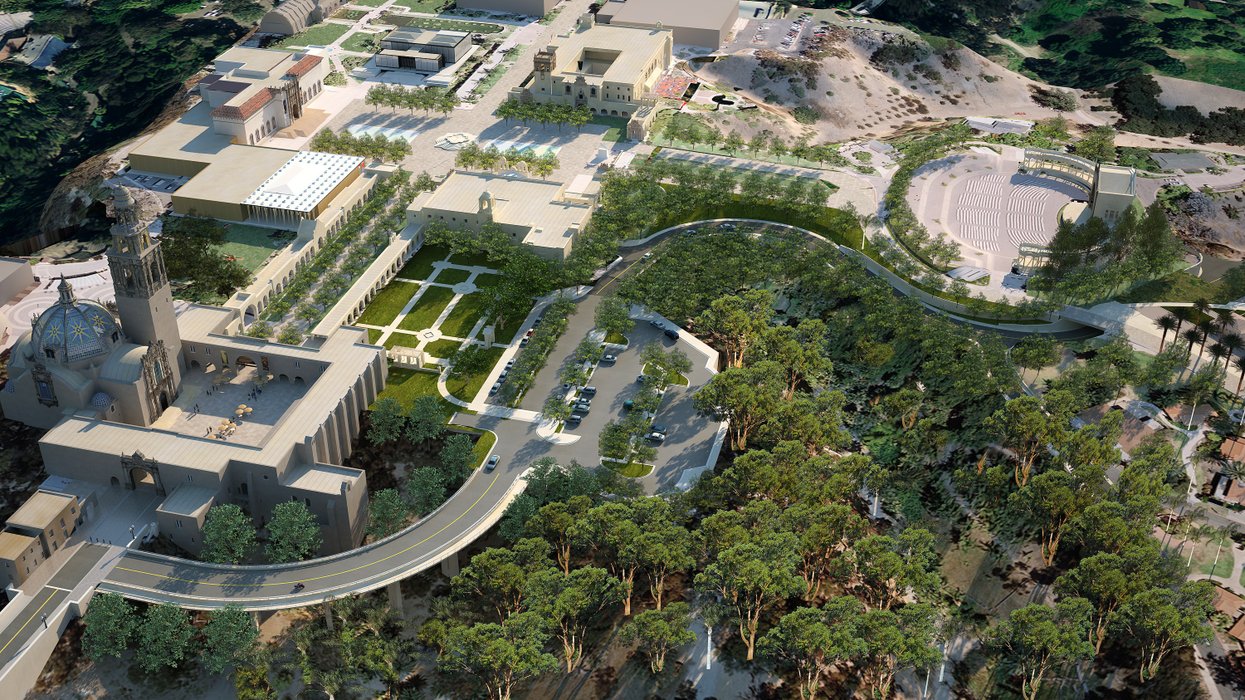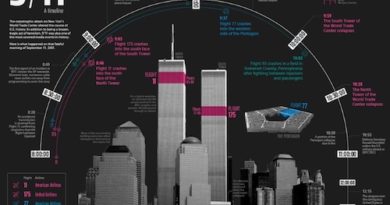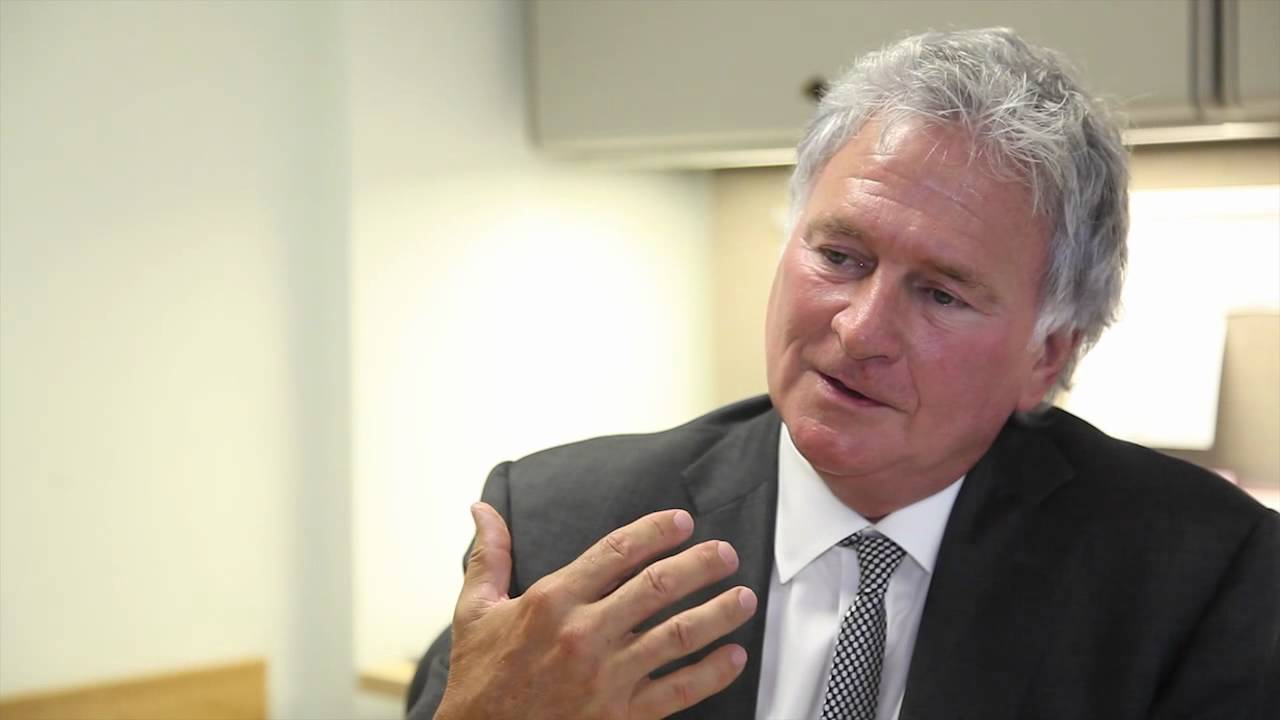Daily Business Report-May 29, 2015
The bypass off the Cabrillo Bridge is shown in this rendering of the Plaza de Panama proposal.
Appeals Court Ruling Gives City Another Shot At
Approving Controversial Plaza de Panama Project
A state appellate court on Thursday overturned a ruling by Superior Court Judge Timothy Taylor that has delayed the Plaza de Panama Project in Balboa Park for more than two years. The ruling clears the way for the city to proceed, if it wants, with plans to improve parking and traffic circulation in the park and to add new pedestrian-friendly plazas and gardens.
The big question following the reversal is whether the major backer of the project, Qualcomm co-founder Irwin Jacobs, would want to revive his plan. Jacobs was willing to fund the $45 million plan but formally backed out after Judge Taylor said it violated a city ordinance.
Jacobs’ chief consultant, Gordon Kovtun of KCM Group, told the Union-Tribune that the ruling means the city could renew private funding requests and move forward with the plan to build a bypass off the Cabrillo Bridge, a new garage and new park space in lieu of roadways.
The Plaza de Panama Project won unanimous approval from the city Planning Commission and was approved by the City Council on a 7-1 vote in 2012. A lawsuit to stop the project was filed by the opposition group Save Our Heritage Organisation, which had supported a rival plan involving a network of hillside roadways and tunnels in the park.
City Attorney Jan Goldsmith, who argued the city’s case before Judge Taylor, said the ruling means that the project could still be revived despite the unnecessary loss of two years’ time if that is what the mayor and the City Council want to do.
“The fact that we were right on the law all along vindicates the city’s legal position, but may prove to be a hollow victory if this project is lost due to the two year delay arising from the lower court’s ruling,” Goldsmith said. “However, if San Diego still wants this project to go forward, it still has that opportunity.”
Hillcrest Pastry Shop Owner

Named One of Top Ten Pastry Chefs in America
Lisa Bailey, owner of the D Bar Restaurant in Hillcrest, has been named one of the Top Ten Pastry Chefs in America by Dessert Professional Magazine.
Bailey and the nine other chefs will be honored at a tasting event next Monday at the Institute of Culinary Education in New York City. The event will feature a walk-around tasting of desserts from some of the most talented chefs in the nation.
Dessert Professional Magazine is a leading food service publication for the pastry, baking, cake, ice creat and chocolate industries and is headed by editors Matthew Stevens and Tish Boyle. The 2015 winners will be featured in the August issue of Dessert Professional.
“A talented and dedicated pastry chef is an invaluable asset in any kitchen,” said Stevens. “Our 2015 Top Ten Pastry Chefs in America have also distinguished themselves as innovators, leaders, and mentors in their chosen career paths. It is our honor to recognize them for their many and varied contributions to our industry.”
The Top Chefs:
Lisa Bailey, D Bar Restaurant, Hillcrest
Michelle Gayer, Salty Tart, Minneapolis, Minn.
Jimmy Leclerk, Laduree USA, New York, N.Y.
Salvatore Martone, Atelier Joel Robuchon, Las Vegas
Maura Metheny, Norman Love Confections, Ft. Meyers, Fla.
Thomas Raquel, Le Bernardin, New York, N.Y.
Thiago Silva, EMM Group, New York, N.Y.
Miroslav Uskokovic, Gramercy Tavern, New York, N.Y.
William Werner, Craftsman & Wolves, San Francisco
Zac Yong, David Burke Group, New York, N.Y.

$14 Million Apartment Project
In La Mesa Close to Completion
Construction of the new, $14 million La Mesa apartment community known as The Quarry is scheduled for completion on June 1.
The Quarry, located at 4330 Palm Ave., was developed by Silvergate Development LLC as the managing partner of Palm Terrace La Mesa.
Sunrise Management recently assumed management of the 60-unit, three-building complex, adjacent to both La Mesa Village and the San Diego Trolley Station. Move-ins started earlier this month.
Sustainable features such as photo-voltaic solar panels, increased insulation, energy efficient double paned windows, LED lighting and natural spring water for irrigation are features of the new community, which will have one- and two-bedroom floorplans with stainless steel appliances, granite counter tops, vaulted ceilings and upgraded flooring, as well as an elevated courtyard with a barbecue and parking with carports.
The project was designed by Tanner Hecht Architecture. Construction was led by Highland Partnership Inc.

Survey Shows Tablets Falling Out of Favor
Tablet shipments have been on a steady decline while tablet trade-ins are growing, indicating a disconnect between initial expectations by users and eventual tablet usage, according to ecoATM, the San Diego company that operates a nationwide network of automated electronics recycling kiosks.
The company said it saw tablet trade-ins more than double from the first quarter of 2014 to the first quarter of 2015.
According to an ecoATM survey, more than one quarter of respondents (27 percent) indicate they use their tablets less than they anticipated when initially purchased. Twenty-six percent report using their device less than three hours per week. Eight percent of tablet owners say they no longer use their device.
Survey findings point to utility as a primary reason why tablet usage may be declining. Of those who no longer use their device: 60 percent indicate they prefer using a laptop instead; 26 percent say their smartphone does everything they need; Seven percent indicate their tablet is broken.
The company said the Apple iPad 2 and iPad mini are collected more than any other tablets.
Takeda Partners with Sanford-Burnham
To Study Protean Role in Heart Failure Treatment
Takeda Pharmaceutical announced it has signed a partnership with Sanford-Burnham Medical Research Institute to study the role of gene regulatory proteins as targets for the treatment of heart failure.
The partners will screen and develop molecules that may improve the metabolism and function of a damaged heart. Sanford-Burnham and Takeda scientists will collaborate to validate the targets and molecules with a goal of creating new treatments for heart failure.
New molecules to treat heart failure represent “a critical unmet medical need,” said Tetsuyuki Maruyama, head of Takeda Pharmaceutical.
In patients suffering from cardiovascular disease, the heart tissue loses its metabolic activity, becoming energy-starved. The aim of the partnership is to identify a molecule that could reactivate the heart, the partners said in a statement.
Takeda and Sanford-Burnham said that researchers will work with Sanford-Burnham’s Conrad Prebys Center for Chemical Genomics to screen the institute’s library of compounds to find potentially effective molecules.
Financial and other terms of the agreement were not disclosed.
This is the third research collaboration between Takeda and Sanford-Burnham in the last five years, the partners said. In 2010, the two partnered to find biomarkers for obesity-related treatments.

South Bay’s Maritime Industry Future Looking Bright
With the U.S. Navy’s pivot toward Asia, maritime businesses in the South Bay are hiring new workers and reporting big increases in revenue.
South Bay business and community leaders heard Thursday from a panel of maritime industry leaders at at an event in National City sponsored by the South County Economic Development Council.
BAE Systems, one of largest defense contractors worldwide with 2,000 employees in San Diego, is investing $100 million in a new dry dock and expects to hire another 500 workers.
Bob Koerber, vice president and general manager of the San Diego operation, said the investment is necessary because the Navy plans to base 19 more ships here by 2020.
“We’re positioning ourselves to support the fleet,” he said. “It’s key that we build today so that the ships stay here for their maintenance.”
YYK Enterprises, which repairs and paints vessels, has been growing rapidly and did over $20 million in buisness last year. Operating Partner Steve Johnston said his small company has grown to 210 employees and now has multi-million-dollar contracts to service the Navy’s growing class of littoral combat ships.
“We are hiring. I think everyone on this panel is hiring,” said Johnston. “I want you guys to share my excitement because it’s such a great opportunity.”
PASHA Automotive will handle shipments of over 5.5 million vehicles this year. Operations were moved to San Diego 25 years ago as container shipments began to dominate at the port of Los Angeles.
Water Authority G.M. Recommends
$1.5 Billion Budget for 2016-2017
The San Diego County Water Authority’s general manager on Thursday recommended a $1.5 billion budget for fiscal years 2016 and 2017, up 2 percent from the current two-year budget due largely to higher costs for the purchase and treatment of water.
Expenses were held in check by lower spending on the Water Authority’s Capital Improvement Program, which decreases by 34 percent in the recommended budget as major projects near or reach completion, and is now at $2.8 billion for the lifetime cost of the projects. In addition, the Water Authority is continuing to streamline the organization through the reduction and reclassification of staff positions following a series of major cost-cutting moves in prior budgets.
“While demands on the Water Authority continue to grow, we have made judicious budget decisions following a top-to-bottom review of every department to ensure that we are providing the best possible service at the least possible cost,” said General Manager Maureen Stapleton. “That led to the strategic reduction and reclassification of positions, along with less reliance on specialized outside services – two measures that will save ratepayer money.
“We also have developed this budget anticipating the start of water purchases from the Carlsbad Desalination Project and reduced water sales due to the drought.”
Public Utilities Commission Approves
New Natural Gas Power Plant in Carlsbad
The California Public Utilities Commission has approved a new natural gas power plant in Carlsbad by a vote of 4 to 1. The 500-megawatt plant would partially replace output previously provided by the San Onofre Nuclear Generation Station as well as the Encina Generating Station on site, which will be closed in 2017.
The approved plan is a scaled-down version of NRG and San Diego Gas & Electric’s original version, and would allow the SDG&E to enter into a 500 megawatt power purchase agreement with the plant. NRG and the utility are looking to the future with the new plant.
“SDG&E has been supportive of the Carlsbad Energy Center since the permanent closure of the San Onofre Nuclear Generating Station, as the plant would be able to facilitate the timely replacement of the region’s last once-through-cooling power plants and would replace a costly, inefficient and high-emissions power plant,” a spokesperson for the utility said in a statement.
But environmental groups aren’t as optimistic about the plant, and had hoped for more review before CPUC made a decision. According to the Natural Resources Defense Council, a judge had heard the case and recommended the CPUC wait to make a ruling until they saw the results of an auction “that would have allowed energy efficiency and renewable energy the opportunity to displace the plant at lower cost.”
Cypher Genomics and Clinic for Special
Children Collaborate on Rare Disease Study
Cypher Genomics Inc. of San Diego and the Clinic for Special Children announced a collaboration in which Cypher’s automated genomic interpretation tools will be utilized for the diagnosis of rare genetic diseases among a unique population.
Located in Strasburg, Pa., the Clinic for Special Children serves many Amish and Mennonite patients, a founder population with a relatively high incidence of genetic disease.
“We are very excited to partner with such a distinctive and highly regarded organization,” said Ashley Van Zeeland, co-founder and CEO of Cypher Genomics. “In this unique setting, it will be critical to account for population-specific genetic variation in order to obtain an accurate interpretation for each patient.”
“A validated automated solution to interpret our genomic data will enable us to return results to more patients than we otherwise could with our current methods, which are both time and labor intensive,” said Erik Puffenberger, laboratory director at the Clinic for Special Children. “Because the software will be tailored to our patient population, we also expect to have an increased level of confidence that we are getting to the correct answers.”



